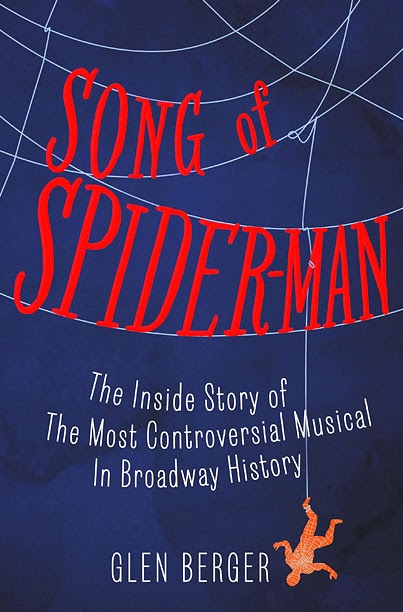Last week, I went to the TRUF at the Chain Theater in Long Island City to see a series of three, one-act plays which were all postmodern-ish retellings/adaptations of fairy tales. At the heart of all three plays were major existential themes: what things drive us to self-destruction? Is death a form of freedom...from endless wants, trauma, duty, or circumstances beyond our control? While admirable and relevant, the plays varied greatly in terms of their execution and quality.
Little Red - written by Billy Aronson, directed by Paul Urcioli, choreographed by Stacey Abeles
This play was the first out of the gate and definitely the weakest of the bunch. It attempts to put a more adult twist on the tale of “Little Red Riding Hood.” The story follows the trajectory of the fairytale, but the familiar characters are fleshed out in less innocent ways. For example, Red’s mother is overbearing and harbors murderous fantasies toward her own mother. The Hunter is turned into Red’s incompetent father. Red and the Wolf’s encounter in the woods is sexually charged, and both Red and her grandmother desire to be eaten by him. Red, in the end, is forced to live “happily ever after” despite wanting to die.
The thought that kept occurring to me as I watched Little Red was that the budget was used in all the wrong ways. Sets were changed through these moving projection screens that seemed to eat up the production costs. Actors had to mime props like the table, food, flowers, and Red’s basket. Because of this, the production came across as quite amateur and high school-ish, despite the actors’ valiant efforts to lift it. The dance at the start to Sam the Sham and the Pharoah’s “Little Red Riding Hood” was unnecessary and not very well executed on the small stage. Rick Cekovsky, who portrayed the Wolf, had on these terrible ears. They were quite a shame as he was quite handsome and could have sold the performance well sans ears. Overall, it seemed like Urcioli had good ambitions but didn’t really consider the realities of the space. And the production suffered because of that.
Forever Neverland - written by Mike Swift, directed by P. Adam Walsh
I fear my reception of this play was colored by my dismay at the first piece. Finding Neverland takes place in a carriage on the ferris wheel at Michael Jackson’s Neverland Ranch...though it took me reading the synopsis to fully figure that out. The carriage lifts off with two Lost Boys named Billy and Gene (ba-dump chink), the Prince, and the Prince’s pet chimpanzee. They are joined at the last minute by a girl named Mary Martin (Clever? I’m ambivalent...) who is disguised as a boy. She has cancer and believes that the King of Neverland will heal her. However, they only treat little boys in Neverland, so when her gender is discovered, she escapes by jumping into the same Ferris wheel carriage. All sorts of hijinks and death ensue because of the Prince’s sadistic tendencies and the randomly violent chimpanzee. Towards the end, the only two characters left are Mary and and Billy. Their conversation reveals that the King has prevented Neverland’s Lost Boys from growing up by sexually assaulting them. Their only escape is to “fly away” (i.e. leaping to their deaths).
Forever Neverland, again, had good thematic intentions but wasn’t executed well. The first two thirds or so had some serious pacing issues and had me looking at my watch several times even though it was only thirty minutes long. I was very confused for much of the play. It improved, though, as characters left the set. The ending was poignant, but it was hard work getting there.
Swift’s writing needs some work, especially at the beginning, because the premise isn’t immediately clear. You don’t know who the characters are and why you should even care. Production elements like the fake blood are unnecessary, especially in a small space. Part of me wonders if it was imagined far more cinematically in the playwright’s mind. Structurally, it seems like certain plot points would be difficult for any director to bring to life on a stage, especially one as intimate as the TRUF.
The Weight of Wishing - written by Sarah Gallina, directed by Sharone Halevy
This play made the other two worth sitting through. The Weight of Wishing tells the story of Daisy, who lives life as it were a fairy tale. Her world comes crashing down around her as the realities of every day life show her that happy endings may, in fact, only exist in stories.
The Weight of Wishing sparkled in a way that the other two didn’t. The dialogue was beautiful and the direction was nuanced. For once, it didn’t feel like the actors (who were good in all three plays) were trying to make up for deficiencies in staging or production. Michaela Morton (Daisy) and Nick Masson (Mark) had brilliant on stage chemistry as sister and brother. Halevy, unlike Urcioli and Walsh, seemed to understand the limits of performing in a black box theatre and made it work. The only thing I didn't love was the cardboard flower shop. It just didn't look good.
If anything, I think some of the opening conversation between Daisy and Mark could be made clearer. Her initial “real-life” state could be better established in that conversation, so that her journey becomes all the more poignant. This play has the most potential of the three presented, and I hope to see it in another incarnation.
(press ticket, fourth row center)









